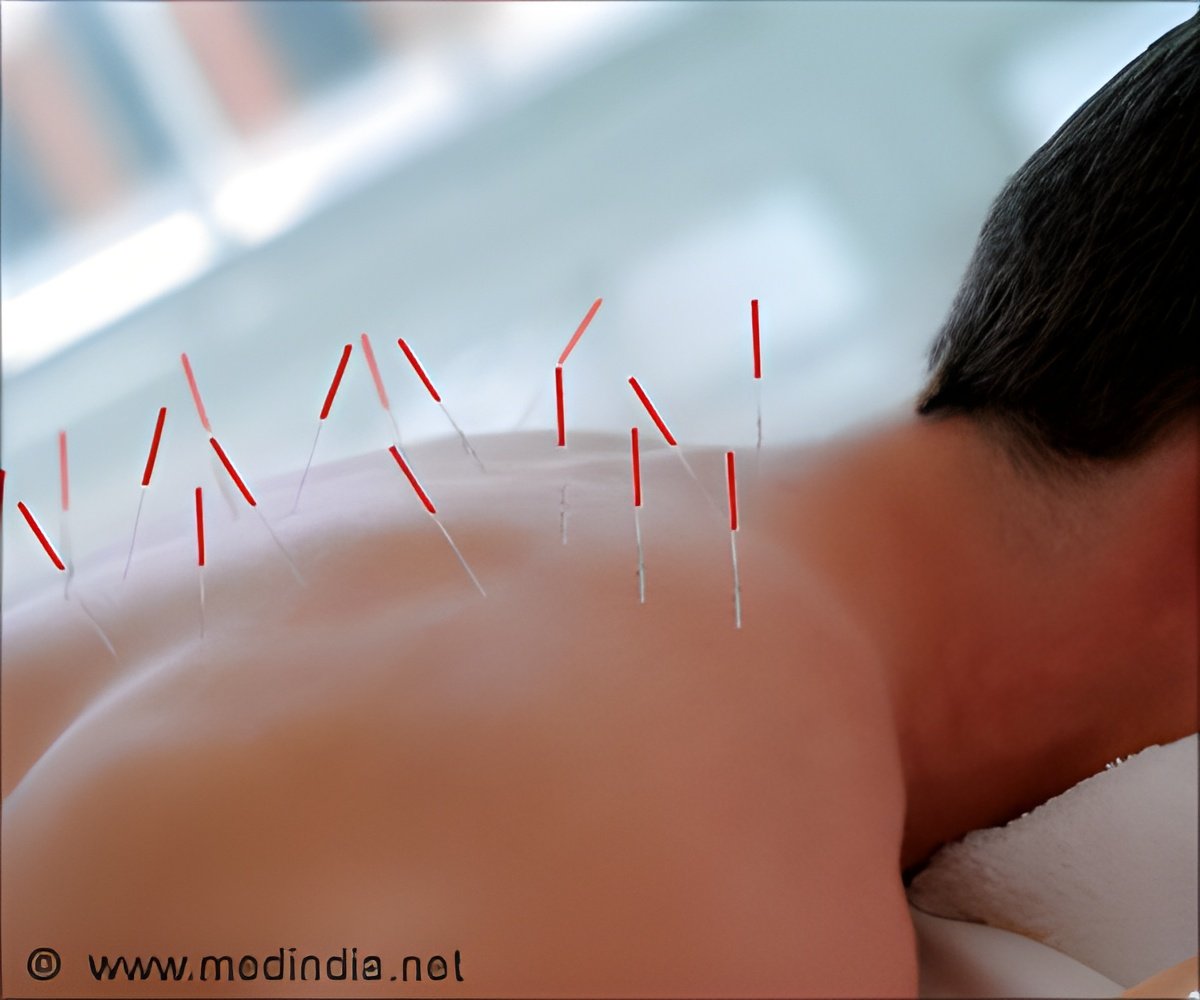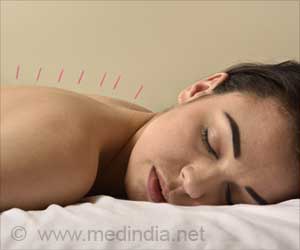Acupuncture is a traditional Chinese medicine, which by twisting slowly or rotating the needle with gentle force or by heat can help in relieving pain.

‘With the proper use of acupuncture and the use of heat, nitric oxide is released from the human skin, which increases blood flow and the release of analgesic or sensitizing substances.’





A new study from LA BioMed researchers offers some answers for why acupuncture may help and why clinical trials have produced mixed results.The researchers found the proper use of acupuncture (with the reinforcement method or coupled with heat, which is often used in acupuncture treatments) can lead to elevated levels of nitric oxide in the skin at the "acupoints" where the needles were inserted and manipulated. They noted that nitric oxide increases blood flow and encourages the release of analgesic or sensitizing substances, which causes the skin to feel warmer and contributes to the beneficial effects of the therapies.
"Our lab has developed a painless, non-invasive biocapture device that can sample human biomolecules over specific skin regions," said Sheng-Xing Ma, MD, PhD, an LA BioMed lead researcher and corresponding author of the study published in Evidence-based Complementary and Alternative Medicine, Volume 2017.
"With this tool, we were able to obtain the first evidence that nitric oxide is released from the human skin surface at a higher level with the proper acupuncture methodology and the use of heat."
Dr. Ma said several acupuncture clinical trials by conventional researchers have produced negative results, finding little difference in pain relief between the use of acupuncture and "sham acupuncture," in which needles are manufactured and/or inserted unsystematically. He said these studies have puzzled the acupuncture community and led many to question whether the proper acupuncture methodologies were used.
Advertisement
They also applied electrical heat for 20 minutes and found elevated levels of nitric oxide at the acupoints. To further validate their findings, they conducted the test with high-frequency and force, which is known as a reduction method, and found nitric oxide levels over the areas of the skin region were reduced.
Advertisement
"Based on traditional Chinese medicine, acupuncture reinforcement is attained by slowly twisting or rotating the needle with gentle force or by heat," Dr. Ma said. "Reduction is attained by rapidly twisting or rotating the needle with great force. Reinforcement results in local feeling of warmness, but reduction causes a local feeling of coldness."
Source-Eurekalert










